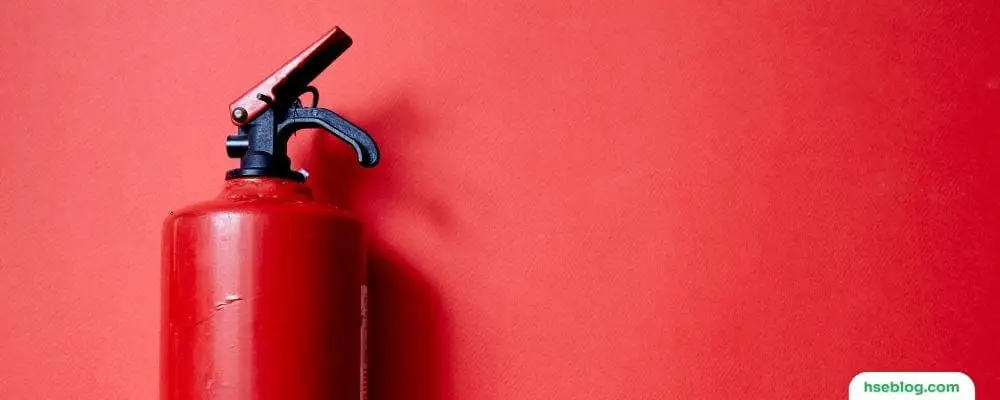Fire prevention and control ensure public safety and reduce property damage. Fires can lead to devastating consequences, both in terms of human lives and economic impact. Understanding the various hazards and implementing effective control measures is essential to minimize fire risk and potential outcomes. This article will discuss different types of fire hazards, prevention measures, and control techniques, as well as the importance of legislation and standards in ensuring fire safety.
Importance of fire prevention and control
The primary goal of fire prevention and control is to save lives and protect property by reducing the occurrence and severity of fires. Fires cause significant destruction and lead to the loss of invaluable possessions, disruption of businesses, and long-term psychological effects on victims. Additionally, fires strain emergency services and can have a considerable environmental impact. By focusing on prevention and control measures, communities can mitigate these risks and create a safer environment for everyone.
General fire statistics and impact on lives and property
According to the National Fire Protection Association (NFPA), in the United States alone, a fire department responds to a fire every 24 seconds. On average, over 1.3 million fires are reported each year, resulting in approximately 3,500 deaths, 16,000 injuries, and $14.8 billion in direct property damage. Most fire-related deaths occur in residential structures, emphasizing the importance of fire prevention and control measures in homes.
These statistics demonstrate the significant impact of fires on lives and property, making it essential for individuals, businesses, and communities to take proactive steps in implementing fire prevention and control measures. By understanding the various hazards and adopting effective strategies, we can work together to create safer environments and reduce the devastating consequences of fires.

Fire Hazards And Control Measures
Fire hazards refer to any situation, substance, or event that has the potential to cause a fire or increase the likelihood of a fire occurring. Fire hazards, including homes, workplaces, and public buildings, can be found everywhere. Control measures are actions taken to minimize or eliminate the risk of a fire occurring.
Some common fire hazards include:
1. Electrical fires
Electrical fires are caused by faulty wiring, overloaded circuits, or malfunctioning electrical appliances. They can occur due to damaged or frayed cords, improper use of extension cords, and outdated or non-compliant electrical systems.
Electrical fires are particularly dangerous because they can start inside walls and spread rapidly, often going unnoticed until significant damage has occurred. Regular inspection and maintenance of electrical systems and practicing safe usage of electrical appliances can help prevent electrical fires.
2. Cooking fires
Cooking fires are the leading cause of home fires and injuries. They typically occur when food or cooking oil overheats, creating flames that can quickly spread to nearby combustible materials. Unattended cooking, grease buildup, and the improper use of cooking appliances contribute to the risk of cooking fires.
To prevent these fires, it is essential to never leave cooking unattended, keep flammable items away from heat sources, and properly maintain and clean cooking appliances.
3. Heating equipment fires
Heating equipment, such as furnaces, space heaters, and fireplaces, can cause fires when they malfunction or are used improperly. These fires often occur when combustible materials are placed too close to heating devices or when heating equipment is not adequately maintained.
To prevent heating equipment fires, follow manufacturer guidelines for usage and maintenance, keep flammable materials at a safe distance, and have heating systems inspected regularly by a professional.
4. Smoking-related fires
Smoking-related fires typically occur when lit cigarettes, cigars, or pipes come into contact with flammable materials like upholstery, bedding, or curtains. These fires can be particularly deadly, as they often start when occupants are asleep or unaware.
To prevent smoking-related fires, never smoke in bed, ensure proper disposal of smoking materials in fire-resistant containers, and avoid smoking while under the influence of alcohol or medication that may cause drowsiness.

5. Arson and intentional fires
Arson is the deliberate act of setting fire to a property intending to cause damage or harm. These fires can be challenging to predict and prevent, often resulting from criminal or malicious intent. However, implementing security measures, such as surveillance cameras and access control systems, can deter potential arsonists and help identify them if a fire does occur.
6. Combustible dust fires
Combustible dust fires can occur in industrial settings where fine particles of materials, such as wood, coal, or metal, accumulate and become airborne. If these particles come into contact with an ignition source, they can create a powerful explosion. Proper housekeeping, ventilation, and dust collection systems can help prevent the accumulation of combustible dust and reduce the risk of fires.
7. Flammable liquid and gas fires
Flammable liquids and gases can ignite and cause fires if they come into contact with heat, sparks, or flames. Common flammable substances include gasoline, propane, and certain chemicals. Proper storage, handling, and disposal of these materials are crucial for preventing fires. Additionally, it is essential to follow safety guidelines when using equipment or appliances powered by flammable liquids or gases.
8. Wildfires
Wildfires are uncontrolled fires in forests, grasslands, or other natural areas. They can be caused by natural factors, such as lightning, or human activities, including campfires, discarded cigarettes, or arson.
Wildfires can spread rapidly and cause extensive damage to property, wildlife, and the environment. Preventing wildfires involves practicing fire-safe behaviors outdoors, maintaining defensible space around structures, and following local fire restrictions and guidelines.
Fire Prevention Measures
Fire prevention measures are steps to reduce the risk of fire occurring or spreading. Some common fire prevention measures include:
1. Fire risk assessments
Fire risk assessments are comprehensive evaluations conducted to identify fire hazards in a building or facility. They involve inspecting the premises, reviewing building plans, and analyzing fire protection systems.
The assessment helps determine the risk level of a fire outbreak and provides recommendations to mitigate these risks. Regular fire risk assessments are essential for maintaining a safe environment and ensuring compliance with fire safety regulations.

2. Proper storage and handling of flammable materials
Flammable materials, such as chemicals, liquids, and gases, can pose a significant risk if not stored or handled correctly. Proper storage and handling procedures include using appropriate containers, labeling materials clearly, maintaining adequate ventilation, and segregating incompatible substances. Implementing these measures reduces the chances of a fire starting or spreading due to the mishandling of flammable materials.
3. Fire-resistant building materials and design
Utilizing fire-resistant building materials and design techniques can slow fire spread and limit structural damage. These materials, such as fire-resistant drywall, insulation, and doors, can withstand high temperatures and help maintain the structural integrity of the building during a fire. The fire-resistant design also includes creating fire compartments and providing adequate means of escape to ensure occupants can exit safely in the event of a fire.
4. Fire detection and alarm systems
These systems are designed to detect the presence of fire, smoke, or high temperatures and alert occupants or emergency services. Smoke detectors sense the presence of smoke, while heat detectors identify rapid temperature increases.
Gas detectors, on the other hand, detect the presence of combustible or toxic gases. These devices can be connected to a central alarm system, which will notify occupants and emergency services in case of a fire.
5. Fire suppression systems
Fire suppression systems are designed to control or extinguish fires, minimizing damage and protecting occupants. Fire extinguishers are portable devices that use chemicals, foam, or other agents to smother a fire.
Sprinkler systems are installed in buildings and release water when triggered by heat or smoke. Clean agent systems use inert gases or chemicals to suppress fires without causing harm to people or the environment. These systems can be automatic or manual, depending on the specific application.

6. Emergency planning and preparedness
This involves creating fire escape plans, conducting fire drills and training, and establishing emergency communication systems. Fire escape plans are essential for ensuring occupants know the quickest and safest routes to exit a building in case of a fire. Regular fire drills and training sessions help familiarize occupants with evacuation procedures and the proper use of fire safety equipment.
Emergency communication systems, such as public address systems and emergency call boxes, allow for rapid dissemination of information during a crisis, enabling people to respond efficiently and effectively.
7. Systems of Work
Systems of work must be designed to minimize fire risk. The degree to which this is done and the exact procedures implemented should be decided through the risk assessment process.
An example of a safe system of work applied to fire safety is using a permit-to-work system to control hot work (where naked flames or a significant ignition source will be created).
Typical precautions for control of hot work:
- Combustible and flammable materials are removed from the work area.
- Items that cannot be removed are covered with fire-retardant blankets.
- The floor is swept clean.
- Any wooden floor is damped down.
- A suitable fire extinguisher is at hand.
- A “fire-watcher” is present in the area while the work is carried out.
- The work area is visited routinely after the work has finished checking the area for smoldering.
8. Good Housekeeping
Good housekeeping is fundamental to fire safety and is about keeping the workplace:
- Waste-free by removing waste regularly (e.g. emptying full litter bins) so that it does not build up and increase the fire risk as a potential fuel source.
- Tidy so that combustible and flammable materials are returned to safe storage after use (e.g. solvents returned to the solvent store).
- Well-ordered so that fuel and ignition sources separate (e.g. ensuring fan heaters are not obstructed).
Pedestrian routes should also be kept clear (e.g. with no obstructions by the fire-escape door), so they can be used during a fire evacuation.

Conclusion
Understanding fire hazards and implementing effective control measures are crucial in safeguarding lives and property. By conducting regular fire risk assessments, using proper storage and handling techniques for flammable materials, incorporating fire-resistant building materials and design, and installing reliable fire detection and alarm systems, we can significantly reduce the risk of fire outbreaks. Moreover, deploying fire suppression systems and emphasizing emergency planning and preparedness further enhance safety and ensure a swift response in an emergency.
Fire prevention measures are not only the responsibility of building owners and managers but also involve the cooperation and vigilance of occupants. By fostering a fire safety awareness and compliance culture, we can work together to create safer spaces and minimize the devastating effects of fires. As we become more proactive in addressing potential fire hazards and adopting comprehensive fire prevention strategies, we are taking critical steps toward creating a safer environment for everyone.

